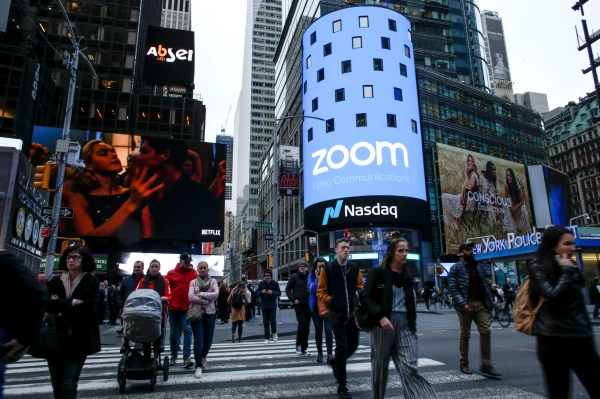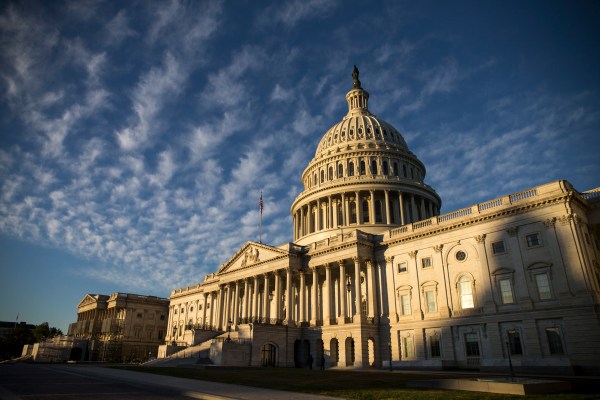Music
Trailers
DailyVideos
India
Pakistan
Afghanistan
Bangladesh
Srilanka
Nepal
Thailand
StockMarket
Business
Technology
Startup
Trending Videos
Coupons
Football
Search
Download App in Playstore
Download App
Best Collections
Technology

While the aftermath of Super Tuesday has left the Democratic Party riven between its more liberal and moderate wings, investors viewed last nightresults as a win for business and markets.
Shaking off the steady beat of bad news about the advance of the novel coronavirus COVID-19 within the U.S., major markets rose on Wednesday following the news of Joe Biden surge to the front of the Democratic Primary pack on Super Tuesday.
The Dow Jones Industrial Average was up a whopping 1,173.45 or 4.5% to close at 27,090.86, while the Nasdaq was up 334 or 3.85% to close at 9018.09 and the S-P 500 was up 126.75 or 4.22% to 3130.12.
Bidenmoderate position contrasts with the more liberal policies endorsed by Vermont Senator Bernie Sanders . Sanders& positions on how to combat climate change and reshape the healthcare industry diverged sharply from the incrementalism that Joe Biden promoted, both as vice president and on the campaign trail this year.
Itbeen a rocky road for the major stock indices, but over the past few days investors& fears about the economic impact of the coronavirus seem to have stabilized as the U.S. government begins to take more decisive action.
Since hitting their troughs of the year on Friday, the Dow has risen 1,681.50 points, the Nasdaq is up 748.35 points and the S-P 500 is up 265.20 points — buoyed in part by todaynews.
Techbiggest companies, including Alphabet, Amazon, Apple, Facebook and Microsoft, all saw their stocks rise on a day that the market soared. Health insurance companies and pharmaceuticals were among the daybig winners buoyed both by the Biden victory and new congressional cash coming from the U.S. government to finance the development of tests, treatments and potentially vaccines for the new coronavirus.
- Details
- Category: Technology Today

Itthe best and worst of times for travel startups.
Massive growth over the past few decades has made tourism one of the big global industries, covering everything from recreation to business conferences to shopping sprees.
But doubts about the future of the industry are growing — and not just because of the novel coronavirus and COVID-19. The rise of remote work and the increasing stresses from tourism on urban and environmental systems portends tougher times ahead.
Given the spate of bad news the past few weeks swirling around global tourism startups, I wanted to go over where we are and what the future holds — and why thatgoing to be so challenging for startups in this space.
- Details
- Category: Technology Today

Today after the bell, Zoom reported its Q4 earnings. The companyrecorded revenue of $188.3 million and its adjusted per-share profit of $0.15 were ahead of expectations, including $176.55 million in revenue and earnings per share of $0.07, according to Yahoo Finance averages.
Down several points during a broad market rally, Zoom has been a hot company to track in recent months. Its profile was heightened due to its position as an incidental benefactor of the worldgrappling with the novel coronavirus — as more countries and companies stressed staying home and working remotely, respectively, Zoomvideo conferencing tool was expected to see rising usage and demand.
The companyshares were down sharply after reporting its earnings.
What follows is a dive into ZoomQ4 earnings, its expectations for the coming period and what those figures may have to say about the infection and its impacts. We&ll wrap with notes from startups that are building remote-work friendly products, sharing what they are seeing on the ground regarding demand for their services during this bleakly fascinating period of history.
Q4 and the future
- Details
- Category: Technology Today
Read more: Despite earnings beat and upbeat forecast, Zoom shares fall after reporting Q4 results
Write comment (97 Comments)
Congress on Wednesday approved $8.3 billion in emergency funding to respond to the spreading novel coronavirus, COVID-19, which has already sickened 80 people across 13 states and killed nine in the U.S. alone.
More than $3 billion of that funding will go to the research and development of vaccines, therapeutics and diagnostics — and some of that financing will likely find its way into the coffers of startup companies working on technologies to combat the disease.
Another $2.2 billion will fund the Centers for Disease Control and Prevention, including $950 million to support state and local health agencies, according to a breakdown of the spending in Politico. About half of the $950 million will be distributed within the next 30 days to help states pay for test kits and services, with no state receiving less than $4 million.
The bill also includes a $300 million carveout to help ensure that all Americans can receive a coronavirus vaccine once itdeveloped — regardless of their ability to pay.
Other agencies that are set to receive money as part of the spending bill include the National Institutes of Health, which will receive $836 million, and the U.S. Agency for International Development, which will receive a $1.3 billion block of funding.
As part of the spending package, the Food and Drug Administration will receive $61 million to pay for vaccine testing and other efforts, including new spending to boost U.S. manufacturing of critical medical devices and pharmaceuticals whose supply chains are jeopardized by their reliance on components and materials made in China.
Remote care is also getting a boost under the spending plan. Telehealth services will receive a $500 million boost from Medicare spending so that elderly patients can avoid going to emergency facilities and risk potential exposure.
- Details
- Category: Technology Today
Read more: US Congress approves $8.3 billion in emergency funding for coronavirus response
Write comment (95 Comments)Across the U.S., sustainable microgrids are emerging as a vital tool in the fight against climate change and increasingly common natural disasters. In the wake of hurricanes, earthquakes and wildfires, the traditional energy grid in many parts of the country is struggling to keep the power flowing, causing outages that slow local economies and ultimately put lives at risk.
Microgrids — power installations that are designed to run independently from the wider electricity grid in emergency situations — have been around for decades, but until the turn of the century, relied almost exclusively on fossil fuels to generate power. While ittaken another 20 years for solar panels and battery storage costs to fall far enough to make truly sustainable microgrids an economic reality, a recent surge in interest and installations have shown that they&ve reached an inflection point and could very well be the future of clean energy.
Take Santa Barbara, where the Unified School District voted unanimously in November to allocate over $500,000 to study and design microgrid installations for schools around the county. A preliminary assessment by the Clean Coalition identified more than 15 megawatts of solar generation potential across 18 school sites.
These solar-plus-battery-storage microgrids would greatly enhance the ability of chosen schools to serve communities during natural disasters or power outages, like the ones induced by CaliforniaPG-E electric utility that affected hundreds of thousands of residents last October. The sites will provide a place to coordinate essential emergency services, store perishable food and provide residents with light, power and connectivity in times of distress.
A completed feasibility study for the microgrid installations is expected in June, and while initial estimates put the final cost around $40 million, long-term power purchase agreements (PPAs) will allow the school district to have the sites set up for free and paid for over time via its normal electric bill — at a cost no greater than grid power. Agreements like these have only become economically viable in the last few years as renewable energy generation costs have continued to fall, and are a major driver of the microgrid boom.
At the end of January, Scale Microgrid Solutions received a commitment for $300 million in funding from investment firm Warburg Pincus. Microgrids today are typically designed and installed to the unique specifications of individual customers. Scale Microgrid Solutions instead provides modular microgrid infrastructure built using shipping containers that combine solar and battery storage with control equipment and backup gas generation.
These modules enable faster deployment and provide a viable option for customers or institutions seeking microgrid capabilities in the $15 million price range. The first modular microgrids were launched in May 2019 with financing provided by Generate Capital, a financing firm focused on advanced, clean-energy technology investments.
Meanwhile, on the opposite side of the country, successive disasters are already proving the value of solar-plus-storage microgrids in Puerto Rico. In 2017, Hurricane Maria catastrophically damaged the centralized electricity grid in the U.S. territory and left many without power for more than a year.
A project funded by the Rocky Mountain Institute, Save the Children and Kinesis Foundation installed solar-plus-battery-storage microgrids at 10 schools in the mountainous central regions of the island, designed to provide energy for on-site libraries, kitchens and water pumps indefinitely during power outages. The installations were completed in December 2019, just weeks before a series of earthquakes that began in January endangered the islandalready sluggish economic recovery. The RMI Island Energy Program told Microgrid Knowledge that while grid power around several of the sites had gone down, the microgrids had continued to operate successfully and provide critical services.
Microgrids go beyond schools though. Several communities are also linking solar-and-storage systems mounted on their homes, employing inverters and controllers that have only become efficient and affordable in the last few years to create &community microgrids& that share power among the participants to supplement or replace grid energy.
In January,Australian startup Relectrify closed $4.5 million in Series A funding to continue refining their inverter and battery-management technology that increases battery lifespan by as much as 30% while reducing operational costs. Relectrify tech also allows large batteries from electric cars — including Teslawildly popular offerings — to be repurposed after they are no longer reliable enough for use in EVs, opening up an enormous pool of second-hand batteries to be repurposed for growing microgrid storage demand.
Programs like these are attractive not just because they offer resilience and independence from grid power often produced with fossil fuels, but because they are increasingly the cheaper option for energy consumers. Residential retail energy prices in Puerto Rico were as high as 27 cents per kilowatt hour (kWh) in 2019, while the calculated cost from home solar-plus-battery-storage systems fell as low as 24 cents in good conditions.
The cost of solar installations has plummeted 90% in the past decade according to the research firm Wood Mackenzie. At the same time, the early effects of a warming climate and associated natural disasters have started to take a toll on American energy infrastructure already struggling to keep pace with regular maintenance and demand growth. Impacted communities have already seen the value of microgrids and are racing to adopt them, even as many larger utility providers look to natural gas or other partial solutions that rely on the aging centralized power grid.
The greatest impact of these early sustainable microgrids may reach beyond the emergency power they provide to nearby residents. They offer a glimpse of a radically different way for communities and energy consumers to think about how power is produced and used. In community microgrid systems, residents have a concrete, practical connection to their source of energy and are asked to work together with their friends and neighbors to control their energy demand so there is enough to go around.
Such a system stands in stark contrast to the power grid of today, where peak demand facilities are routinely called upon to burn some of the most environmentally harmful fuels to accommodate demand with few if any social or technological limitations. Sustainable microgrids are finally becoming truly affordable, and in the process are beginning to change the way we think about energy consumption and resilience.
- Details
- Category: Technology Today
Read more: Sustainable microgrids are the future of clean energy
Write comment (95 Comments)Google cancels its big developer conference, Justin Kanlegal startup shuts down and Robinhood offers more details about a recent outage. Hereyour Daily Crunch for March 4, 2020.
1. Google cancels its 2020 I/O developer conference
After Facebook canceled its F8 developer conference and Google itself moved its Cloud Next event in April to a digital-only conference, this wasn&t a huge surprise, but it provides another sign of how the COVID-19 coronavirus is clearing the 2020 industry calendar.
Meanwhile, Mark Zuckerberg has outlined some of the steps that Facebook and his familynonprofit, the Chan Zuckerberg Initiative, are taking to respond to the pandemic. Facebookresponse focuses on three areas: providing accurate information, stopping misinformation and providing data for research.
2. $75M legal startup Atrium shuts down, lays off 100
Justin Kan hybrid legal software and law firm startup Atrium is shutting down today after failing to figure out how to deliver better efficiency than a traditional law firm. The startup has now laid off all its employees; it will return some of its $75.5 million in funding to investors, including Series B lead Andreessen Horowitz . The separate Atrium law firm will continue to operate.
3. Robinhood offers $15 discount, blames outage on record trades
It wasn&t the leap year, a coding blip or a hack that caused Robinhoodmassive outages earlier this week that left customers unable to trade stocks. Instead, the co-CEOs write that &the cause of the outage was stress on our infrastructure — which struggled with unprecedented load. That in turn led to a ‘thundering herd& effect — triggering a failure of our DNS system.&
4. India lifts ban on cryptocurrency trading
IndiaSupreme Court has overturned the central banktwo-year-old ban on cryptocurrency trading in the country in what many said was a &historic& verdict. The Reserve Bank of India had imposed a ban on cryptocurrency trading in April 2018 that barred banks and other financial institutions from facilitating &any service in relation to virtual currencies.&
5. The future of gig work could involve unions and co-ops
Behind the scenes, an alternative approach to CaliforniaAB 5 worker protection law has been picking up steam. Called the Cooperative Economy Act, the draft legislation is designed to accomplish much of what AB 5 aims to achieve, such as worker protections and benefits. But it also brings unions and co-ops into the mix. (Extra Crunch membership required.)
6. VSCOnew editing tool Montage lets you edit and layer both photos and video
VSCO already allowed users to apply photo-like edits to their videos by doing things like applying filters or adjusting the exposure. But Montage is an entirely different sort of video editing experience.
7. Uber sold its food delivery business in India to Zomato for $206M
In January, Uber announced that it had sold the India business of Uber Eats to Zomato for a 9.99% stake in the loss-making Indian food delivery startup. In a regulatory filing, the company has now disclosed that the deal was worth $206 million.
The Daily Crunch is TechCrunch roundup of our biggest and most important stories. If you&d like to get this delivered to your inbox every day at around 9am Pacific, you can subscribe here.

- Details
- Category: Technology Today
Read more: Daily Crunch: Coronavirus prompts more conference cancellations
Write comment (94 Comments)Page 1297 of 1414

 7
7





